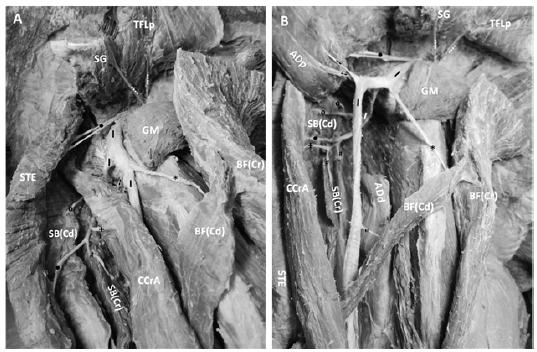ABSTRACT
This work aimed to describe the origin, distribution, and ramifications of the ischiadicus nerve in the giant anteater and to provide anatomical data which could explain not only the evolutionary aspects but also provide important information for other related works. For the present study, four specimens were used, prepared by perfusion of 10% formaldehyde solution via the femoral artery, for conservation and dissection. The origin of the right and left ischiadicus nerves in the giant anteater from the ventral ramification of the third lumbar (L3) and the first (S1), second (S2), and third (S3) sacral spinal nerves. These nerves were symmetrical in all animals studied. The distribution and ramification occurred to the superficial, middle, and deep gluteal, gemelli, piriform, quadratus femoris, tensor fasciae latae, caudal crural abductor, cranial and caudal parts of the biceps femoris, adductor, semitendinous, and cranial and caudal parts of the semimembranous muscles. Based on the origins of the ischiadicus nerves, there is a caudal migration in the nerve location in animals in a more recent position on the evolutionary scale due to reconfiguration of the lumbosacral plexus, resulting from the increase in a number of lumbar vertebrae. There is no complete homology of the muscle innervation.
Keywords:
myrmecophagidae; pilosa; evolution; innervations




